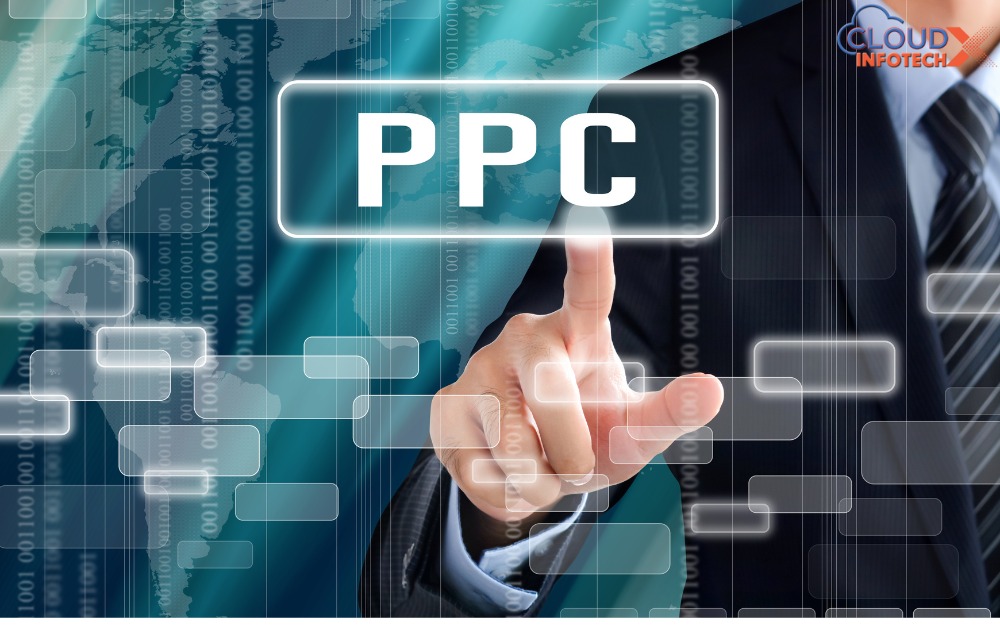
Pay-per-click (PPC) advertising is a powerful online marketing strategy that allows businesses to display ads on search engines and websites, and only pay when a user clicks on their ad. PPC advertising encompasses two main types: paid search ads and display ads. In this article, we’ll explore the differences between these two ad formats, their advantages, and how to determine which one is best suited for your business.
Our Team specializes in creating and managing highly effective PPC advertising campaigns tailored to your business needs. We help businesses leverage the power of paid search and display ads to maximize their online visibility, drive targeted traffic, and generate high-quality leads.
What is PPC advertising?
- PPC advertising is a type of digital advertising in which advertisers pay for each click on their ads.
- This model allows advertisers to only pay for results, making it a cost-effective way to drive traffic to their website.
- PPC ads can be displayed on search engines, social media platforms, and other websites.
Paid search advertising, also known as search engine marketing (SEM), involves placing ads on search engine results pages (SERPs) when users search for specific keywords or phrases related to your business. These ads are typically text-based and appear at the top or bottom of the SERP, often with a small “Ad” label to distinguish them from organic search results.
Paid search ads are highly targeted, as advertisers can choose the keywords they want to trigger their ads. This allows businesses to reach potential customers who are actively searching for products or services like theirs. Advertisers pay a fee, known as cost-per-click (CPC), each time a user clicks on their ad.
Search Ads
- Search ads are the most common type of PPC ads. These ads appear on search engine results pages (SERPs) when users search for specific keywords or phrases.
- Search ads are highly targeted and can be customized to match the user’s search intent.
- For example, if a user looks for “best running shoes,” they may see ads for running shoes or related products.
How to create search ads
- Creating search ads involves selecting keywords that are relevant to your product or service and creating ad copy that includes those keywords.
- Advertisers bid on keywords, and the highest bidder will have their ad displayed in the top position on the SERP.
Benefits of search ads
- Search ads are highly targeted and can reach users who are actively searching for products or services like yours.
- They are also cost-effective, as advertisers only pay when a user clicks on their ad.
Display Ads
- Display ads are visual ads that appear on websites, mobile apps, and social media platforms.
- These may include images, videos, and interactive elements.
- Display ads can be highly targeted and can reach a large audience.
How to create display ads
- Creating display ads involves designing ad creative, selecting targeting options, and choosing where to place your ads.
- Advertisers can target users based on their demographics, interests, and behaviors.
Benefits of display ads
- Display ads can be highly engaging and can help to build brand awareness.
- They can reach a large audience and can be customized to match the user’s interests and behaviors.

Choosing Between Paid Search and Display Advertising
When deciding between paid search and display advertising, consider the following factors:
- Business goals: Determine whether your primary objective is to drive immediate sales and leads (paid search) or to build brand awareness and engage with a wider audience (display).
- Target audience: Consider where your target audience is in the buying cycle. Paid search is best for users who are actively searching for products or services, while display ads can reach users who are in the awareness or consideration stages.
- Budget: Paid search ads typically have a higher CPC compared to display ads, but they also tend to have a higher return on investment (ROI). Display ads, on the other hand, can be more cost-effective for building brand awareness and reaching a wider audience.
- Industry and competition: Research your industry and competitors to see which ad formats they are using and how successful they are. This can provide valuable insights into which approach may work best for your business.
The Benefits of Having a Paid Search Strategy
There are almost endless benefits to having a solid paid search strategy as part of your digital marketing efforts. These are a few of our favorites.
Increased Visibility and Brand Awareness
With almost 4 billion searches every day, it can be challenging for businesses to gain visibility. Paid search allows businesses to show up at the top of search results where most clicks occur, so your website will get significantly more traffic, which leads to higher visibility and increased brand awareness. This means paid search is a great way to reach a wide audience that might not know your brand exists.
Valuable Data Insights
Paid search provides marketers with valuable data insights that can help shape their overall marketing strategy, such as what keywords and ad copy are resonating with their target audience, the times of the day their ads perform best, and which days of the week users are most likely to click on ads. This data can ultimately help marketers tweak their ads for more personalized ad delivery with less ad spend, improving their overall marketing strategy.

Improved Website Traffic and Conversions
Paid search doesn’t just increase brand awareness and visibility; it also increases website traffic and conversions. When done correctly, paid search leads to high-quality leads, increased website traffic, and more customers. With the right targeting, calls to action, and landing pages, paid search can provide a significant boost to the business’s bottom line.
How to Create a Paid Search Strategy
Setting up a paid search campaign can seem daunting, but it’s actually quite simple when broken down into its individual components. Here are the steps to follow when setting up a paid search campaign:
- Set goals. Before you begin, it’s important to set clear and achievable goals for your campaign. Ask yourself what you want to achieve from the campaign and how you will measure success.
- Select keywords. After establishing your goals, you need to select the right keywords to target. Use keyword research tools to create a list of relevant and targeted keywords, and make sure to select both short-tail and long-tail keywords.
- Choose the right platforms. Once you have your keywords ready, it’s time to select the platform you want to advertise on. The most popular search engine platforms are Google Ads and Microsoft Advertising, but there are other options you can choose from depending on your budget and target audience.
- Set your budget. Now you need to decide how much to invest in your campaign. This should be determined by how much you’re willing to risk to get the desired results. Set a realistic paid media budget, and make sure to track your spending closely.
- Create ads. It’s time to create your ads! Start by writing compelling ad copy variations that are both informative and persuasive. Use strong calls to action, and A/B tests to see which versions convert the best.
- Monitor and optimize. When your campaign is live, it’s important to monitor and optimize it regularly. Analyze the performance of your ads and make tweaks and adjustments where necessary to ensure that you are getting the best possible ROI.
By following these steps, you can easily create and manage a successful paid search campaign. Paid search can be a powerful tool to help increase visibility, website traffic, and conversions—but only if you use it correctly. If you’re looking to get ahead of your competition, take the time to create a thoughtful paid search campaign and watch your business grow.
Conclusion
Pay-per-click advertising is a powerful tool for businesses looking to boost their online presence and drive traffic to their website. By understanding the differences between paid search and display ads, and how to leverage their unique advantages, businesses can create effective advertising campaigns that deliver measurable results. Whether you choose to focus on paid search, display advertising, or a combination of both, it’s essential to regularly monitor and optimize your campaigns to ensure you are getting the best possible return on your investment.
Our expert team ensures that your ads reach the right audience at the right time, with a focus on optimizing ad performance and delivering measurable results. By using data-driven strategies and proven techniques, we aim to enhance your return on investment (ROI) and help your business grow through cost-effective digital advertising







